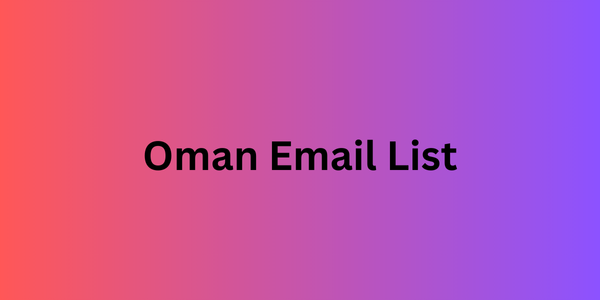When writing proposals, you need to stay focused and strategic to convince decision-makers of your plan. That means following a system and tailoring each proposal to your target client. Let’s take a closer look at the 3 C’s of proposal writing so you can maximize client engagement and buy-in.
What is Proposal Writing? The 3 C’s of Proposal Writing
Proposal writing means creating a persuasive document that outlines a plan, project, or idea for your target customer. The goal might be to secure oman email list approval for funding or another form of support. Or it might be to nudge the prospect to do business with you.
Your document must persuade the recipient that your proposed plan is doable, well-thought-out, and worth investing in.
Let’s take a quick look at some proposal types. The 3 C’s of Proposal Writing
Types of Proposals
Here are five types of common proposals:
1. Request for Proposals (RFP)
An RFP is a document issued by an organization how much money went into seeking proposals from potential suppliers or service providers. Companies respond to RFPs by submitting proposals outlining how to meet the organization’s needs and requirements.
2. Unsolicited Proposals
These proposals are initiated by the proposer without a formal request from the recipient. They help introduce a new idea or project to potential clients or investors. A sales proposal can be an example of an unsolicited proposal in some cases. They have to capture attention quickly, clearly outline the unique benefits of your offering, and align with the recipient’s specific needs and goals.
3. Grant Proposals
Grant proposals are submitted to government agencies, foundations, or other funding bodies. The goal is to secure financial support for a specific project or research initiative.
4. Investor Proposals
An investor proposal typically includes a business plan, financial projections, and a detailed explanation about where the investment will go.
5. Internal Project Proposals
Internal proposals are for pitching new projects or initiatives to internal management or other departments at your organization. These proposals should align with your company’s goals and demonstrate a clear benefit.
Benefits of a Well-Written Proposal
Proposal writing is more than just a formality.
It’s a critical communication tool to persuade clients, secure funding, and move projects forward. Whether you’re a proposal writer working on an RFP or a SaaS company working on an unsolicited proposal, mastering the art of proposal writing is essential.
Let’s examine the 3 Cs of proposal writing: “Compliance, Competent, and Comprehensive.”
1. Compliance: Meet All Requirements
The first C in proposal writing stands for compliance.
Compliance means following the guidelines and material data requirements your client or funding organization has in place. A compliant proposal addresses criteria outlined in the RFP or other proposal requests, so nothing gets overlooked.
Why Compliance Matters
Organizations have requirements in place for a reason. Compliance demonstrates your attention to detail and respect for the client’s needs and guidelines. A non-compliant proposal may be disqualified outright — regardless of its merits.

